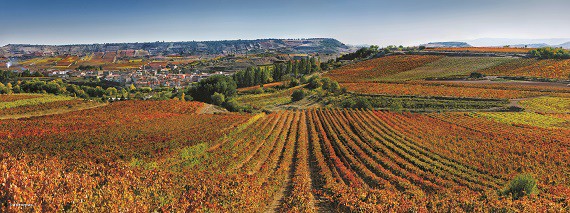“Our competitive advantage is based on the human factor, for what the consumers are really interested in is the history behind a brand. We have to focus on transmitting sensations, happenings, experiences more than regulations.
“The campaigns have to transmit the emotion of a great wine, which perhaps is the most difficult task of all. Within this context, the regulations will not guarantee why our wines are better.”
Bodegas Ramón Bilbao winemaker Rodolfo Bastida says: “All promotional campaigns are good and useful, and in this case, betting on the origin of the wine, knowing where we come from and who we are, I think it is an interesting and different way of talking about our appellation of origin.
“You never know if it is the best option to talk about Rioja, but I think it is the right way.”
Diego Talavera, international sales director of Gonzalez Byass’s Beronia brand, says: “The new campaign breaks with the norm and that in itself has had an impact internationally. The positive aspects of the campaign are that it has forced commentators to rethink how they perceive Rioja, which in itself is a PR and marketing opportunity. It forces you to ask a question, a question that is related to Rioja.
“If it gets people talking about Rioja from a different perspective then, I believe, it can only be positive.”
SPARKLING AND ROSÉ RIOJA
“In Rioja we are always evaluating what we offer consumers and we saw an opportunity to come alongside what some producers were already investing in and broaden our ‘portfolio’ to include sparkling wines and complement the existing range of still wines,” says Lapuente.
“These will be quality sparkling wines which must adhere to strict quality requirements. For example, all wines must be produced in the traditional method, they must go through a double evaluation process including chemical and sensory tests, and fulfil longer maturity periods for the secondary fermentation.”
“We have also reduced the colour limit for rosé wines to 0.10 from 0.20 UA/cm. This is to allow wineries to produce paler styles of rosé if they wish. Rosé wines are still gaining worldwide market share, so this provides more flexibility for producers to make all styles of rosé to cater for all consumer tastes and trends,” Lapuente adds.
Talavera says: “Yes, we are working on new white and rosé proposals, especially following the success of Beronia Rosado, which is doing very well in export internationally. These are very new projects and we can’t reveal too much, but we can reveal that they are at the top end of the quality scale, in line with where we believe consumer trends are going.
Asked if he has you plans to make a sparkling Rioja, Talavera replies: “No.”
NEW RIOJA CLASSIFICATIONS
Lapuente says of the classifications: “The new indications will be marked clearly on the labels. The names of villages, towns and municipalities may now be the same text size as Rioja on the label.
“For example, a consumer will now be able to see that their wine is a Vino de Cenicero from Rioja Alta. The same will go for Viñedos Singulares.”




